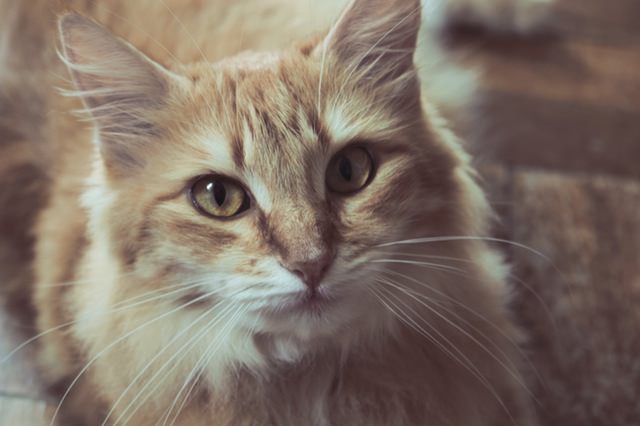Whiskers are one of the iconic features of cats and everyone knows how they tickle when they touch your skin. Although we know cats use their whiskers, we often take them for granted and don’t realize just how special these thick pieces of hair are. In fact, your cat uses their whiskers for daily life more than you probably realize. Ever wonder what whiskers are for and how they work? Check it out!
#1 – Hyper-Awareness
Your cat’s whiskers actually help provide them with information about their environment. What information, you ask? Well, nearly all of it. Whiskers are extremely sensitive and located on your cats cheeks, above their eyes and on their legs. A cats’ whiskers allow them to feel their surroundings. Whiskers will tell cats if they can squeeze through an opening or not or if something is in their way. Think about how you might stretch your arms in front of you to feel around and make sure you don’t bump into anything after you turn the lights off; this is what your cat’s whiskers do for them. The whiskers on the legs actually help cats catch their prey. Cats can’t see very well close-up, so the whiskers on their legs help them determine whether or not the prey they’ve just caught is still alive and moving. The whiskers sense the movement and your cat then knows the next best action. Further, the whiskers above your cat’s eyes help protect the eyes. They’ll sense something nearing your cat’s face, like tall grass, and induce a blinking response so the eyeballs don’t get poked.

#2 – They Vibrate
How whiskers work is almost as interesting as why. Whiskers feel through vibration and they can not only detect even the softest touch, but even the slightest change in airflow to let them know something in the environment is moving (like a possible predator). Whiskers are rooted much deeper than regular fur and are covered with sensitive tissues and nerves. The scientific term for whiskers is “vibrissae,” which means “tactile hairs.” This makes sense given that whiskers can feel both distance and space.
#3 – No Grooming Necessary
Whiskers don’t need to be trimmed and in fact should never be cut. Your cat needs them and life without whiskers can be more difficult for felines and even somewhat dangerous. Whiskers shed and grow back all on their own, so keep in mind that even the smallest trim can cause stress for your cat. Remember that cats are used to depending on their whiskers every day for information, so even a slight change could be disorienting.

#4 – They Reflect Your Cat’s Coat
Whiskers often reflect the type of coat cats have – or don’t have. While most cats have whiskers that look the same, hairless breeds such as the Sphynx, often don’t have any whiskers at all. Breeds with curly coats, like the LaPerm, actually have curly whiskers! Bombay cats have a beautiful, solid black coat and their whiskers reflect this gorgeous coloring. Just like people, as cats age their fur and whiskers will begin to change color and turn grey. Whiskers are technically a type of hair with a special function, so it makes sense that their color and appearance is related to the rest of your cat’s coat.
